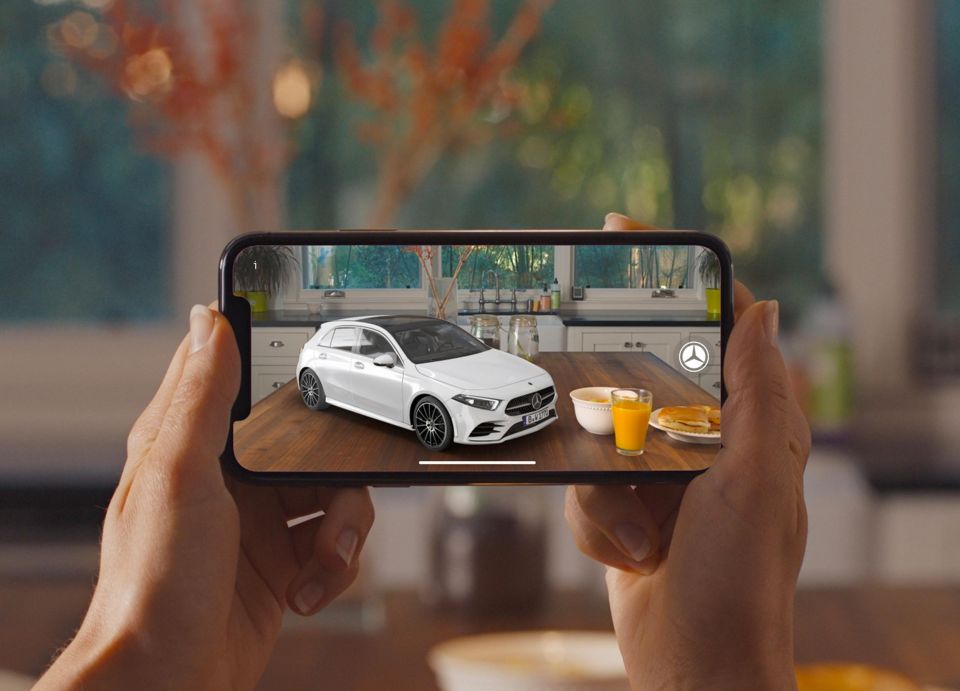

Max Davies
2026 GWM Cannon Ultra review
6 Days Ago
With COVID-19 keeping us at home, how can brands improve the car buying experience? The technology already exists, after all.

Tech Contributor


Tech Contributor
COVID-19 has pushed us into an era we didn’t expect to full start for a number of years. Teams working remotely, discovering new ways to connect and quickly learning how to take the things we did face to face and make them virtual.
The way we buy new cars has been slowly changing to allow customers to do more from their couches. With everything happening today, car companies will be pushing virtual shopping in a big way over the coming months and years.
Many brands already dipped their toes in the water when it comes to going beyond the downloadable brochure.
Technology such as augmented reality (AR) is one space creating a real wow factor, delivering an immersive experience.
Augmented reality allows you to use your smartphone to view an object, such as a car, through the lens of your camera and project it onto your driveway or kitchen table. IKEA recently adopted this for placing virtual furniture in your home, and BBQs Galore has an app to see what a Weber will look like on your deck.
We’ve been looking at the car brands using AR, and some are very impressive. Others are marketing experiments. Many produce apps to showcase one particular vehicle, sometimes only in one market, while other brands cover their entire range.
The Skoda AR app allows you to explore the Karoq by virtually sizing and placing on any surface in front of you. All you need is a smartphone.
Once the Karoq is virtually in your world you can change the colours and wheels, and even take a photo. Skoda also allows you to view the Karoq in ‘life size’ so you can place it on your driveway and walk around it.
You can also interact with the Karoq, open the doors and ‘go inside’ the car. It is a left-hand drive version, but still gives you a great insight to the vehicle without leaving home.
Volkswagen produced a similar app for the Touareg but you’d never really know. It doesn’t appear to have been built for the Australian market and again you need to experience the car without assuming all colours and features are going to be available locally.
Placing a virtual Touareg on your coffee table is an option, as is a life-size model. You can choose exterior and interior colours, and then explore the car in relatively good detail.
Volkswagen has used the opportunity to also educate you on features such as blind-spot monitoring, manoeuvre braking, adaptive cruise control and more, through AR video demonstrations.
Inside the cabin you can get a detailed look around at the Innovision Cockpit, but you can’t experience the massaging seats.
Porsche might have the best AR app we’ve experienced. Its app is for all its vehicles, caters for your location, and is actively connected to its configuration tool.
This means you’re seeing vehicles, colours, wheels and specifications applicable to you. It also means if you customise the car extensively, that data can be used for pricing, and to lead through the buying experience.
The level of detail in this app is also far beyond others – you can view their cars stripped bare or fully dressed, far beyond what you can see in a showroom. You’ll also taking photos once the car is positioned perfectly in your driveway.
Mercedes created an app called “cAR” for the A-Class and it also allowed you to experience their latest vehicle in augmented reality, customise colours, open doors and experience the interior, including the infotainment system; MBUX.
For a bit of fun you could also drive the A-Class like a virtual remote control car around your room, but this should obviously not be seen as a real test drive.
In Melbourne, we’ve previously attended an event at the Mercedes Me store in conjunction with Epson. Epson took AR to a different level using their Moverio AR Glasses.
Wearing these Epson glasses you can sit in a real Mercedes. When you look at particular areas of the car, the glasses overlay video and play audio to blend the virtual and real world.
When you look at the bonnet you see the inner workings of the engine and hear statistics about the performance.
You could do the same thing with a smartphone or tablet, however the ability for the smart glasses to see, interpret, and deliver content is something special.
All of these apps existed before COVID-19. Some are further ahead of others and some brands are yet to start, from what we could find.
It’s an exciting time for brands to elevate their buying experience with technology, bringing their products into our homes to assist our decision making.
Brands need to think about how they can bring the dealership experience to customers, on a device they already have: their phone.
This is the beginning, and we’re ready to confuse our neighbours walking around a car that isn’t actually there…


Max Davies
6 Days Ago


Josh Nevett
4 Days Ago


Max Davies
4 Days Ago


Max Davies
3 Days Ago


Neil Briscoe
2 Days Ago


Max Davies
1 Day Ago